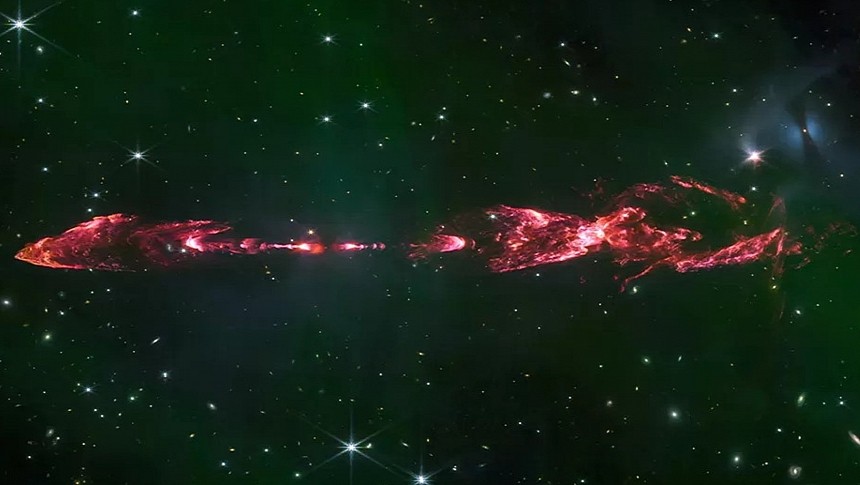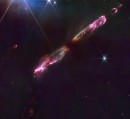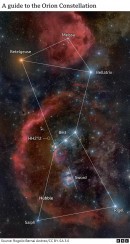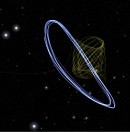The birth of a newborn star is just as loud and dramatic as a newlywed couple waiting in the delivery room. The only difference at the end of the day is a matter of degree. Don't believe us? Well, the latest findings from the James Webb Space Telescope strongly point in that direction. Just look at this newest photograph of the Orion constellation for proof. Even from 1,300 light years away, the effects of star birth are still radiating throughout the universe.
The peculiar stellar object in question snapped by JWST is known as Herbig-Haro (HH) 212. As a cosmological mish-mash of stellar dust, evolving protostars, and mature stars observing it all from a distance, HH212 is like an interstellar maternity ward where the nurses and doctors are the laws of physics. At the center of a formation of dust and bright-red plasma, albeit shrowded by all the chaos around it, lies a forming proto-star in the middle of its grand entrance to the cosmos. Scientists believe that this awe-inspiring young star throwing the equivalent of a newborn temper tantrum can't be any older than 50,000 years old.
For some context, our own home Solar System is roughly 4.5 billion years old by the latest estimates. This means HH212's newest stellar neighbor hasn't even had its proverbial umbilical cord cut just yet. As torrents of dust and other solid matter coalesce around the stellar mass, gravity will soon pull them into distinct planets, moons, and other space junk, much the same as our own Solar System. It's only when JWST's powerful sensors target the distinct infrared profile of the HH212 stellar mass that scientists can pinpoint exactly where this new star lies within this mass of dust and light.
"As the blobby ball of gas at the center compacts down, it rotates. But if it rotates too fast, it will fly apart, so something has to get rid of the angular momentum," said Prof Mark McCaughrean, Senior Advisor for Science & Exploration for the European Space Agency, in an interview with BBC News. "We think it's jets and outflows. We think that as all the material shrinks down, magnetic fields are pulled together and then some of the material coming in through the disc gets captured on magnetic fields and is thrown out through the poles. That's why we call these structures bi-polar."
All the while, high concentrations of molecular hydrogen, i.e., two atoms of hydrogen bonded together, interacting with the ionizing radiation of this new protostar, makes for a look quite similar to a weapon a Sith lord might unsheathe from their holster in Star Wars. From a certain point of view, this stellar event is just an elaborate cosmic lightsaber to begin with.
For some context, our own home Solar System is roughly 4.5 billion years old by the latest estimates. This means HH212's newest stellar neighbor hasn't even had its proverbial umbilical cord cut just yet. As torrents of dust and other solid matter coalesce around the stellar mass, gravity will soon pull them into distinct planets, moons, and other space junk, much the same as our own Solar System. It's only when JWST's powerful sensors target the distinct infrared profile of the HH212 stellar mass that scientists can pinpoint exactly where this new star lies within this mass of dust and light.
"As the blobby ball of gas at the center compacts down, it rotates. But if it rotates too fast, it will fly apart, so something has to get rid of the angular momentum," said Prof Mark McCaughrean, Senior Advisor for Science & Exploration for the European Space Agency, in an interview with BBC News. "We think it's jets and outflows. We think that as all the material shrinks down, magnetic fields are pulled together and then some of the material coming in through the disc gets captured on magnetic fields and is thrown out through the poles. That's why we call these structures bi-polar."
All the while, high concentrations of molecular hydrogen, i.e., two atoms of hydrogen bonded together, interacting with the ionizing radiation of this new protostar, makes for a look quite similar to a weapon a Sith lord might unsheathe from their holster in Star Wars. From a certain point of view, this stellar event is just an elaborate cosmic lightsaber to begin with.












